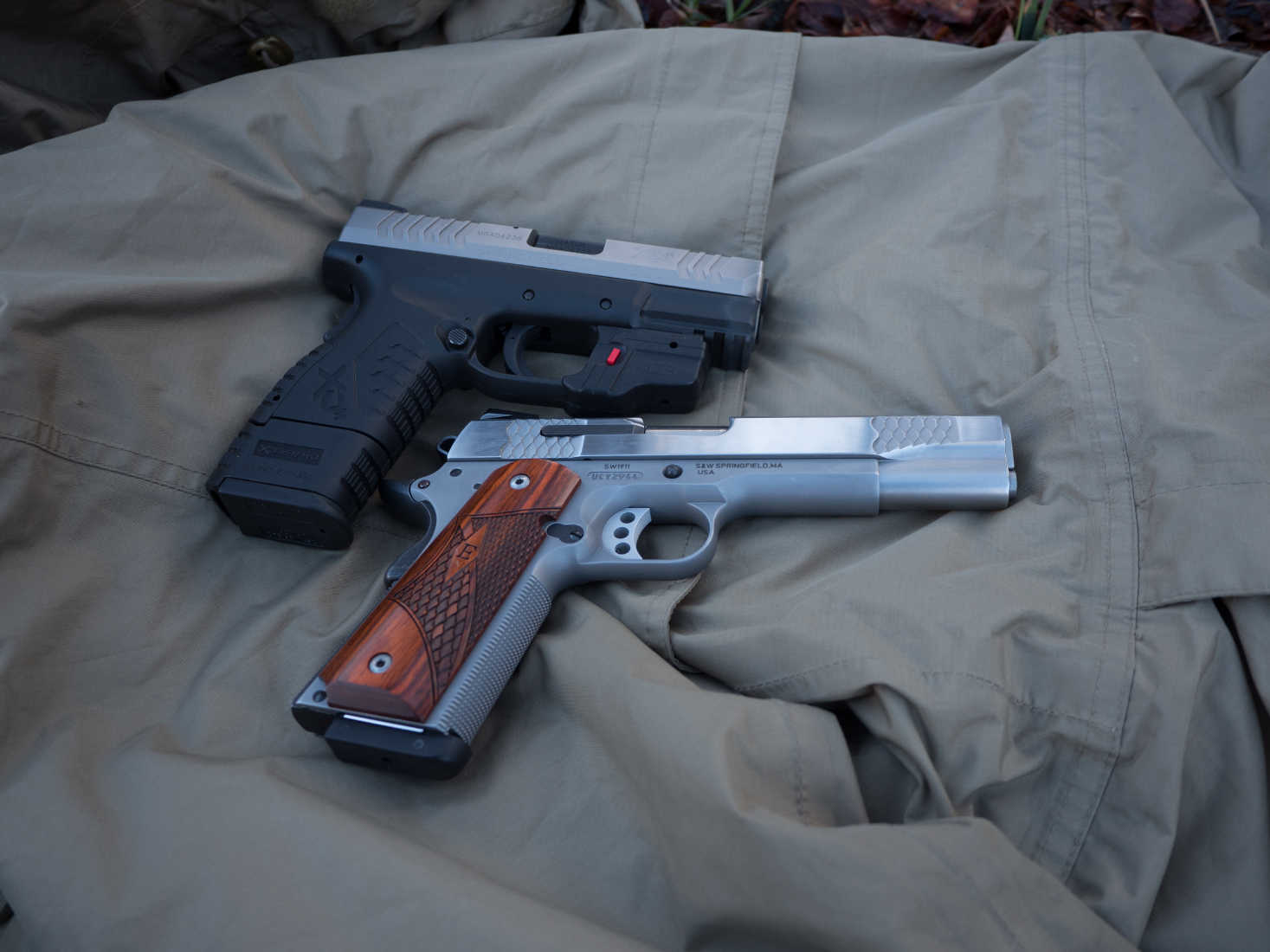By: Spencer Durrant
The first gun I bought as a concealed carry weapon was a Glock 23. Chambered in .40 S&W and packed into a compact frame, it served me well for years until I decided to switch to a CZ P-07 9mm.
The entire time I had my Glock 23, shooting buddies told me I’d either gone overkill with a .40 S&W, or hadn’t gone big enough and should’ve picked up a .44 S&W Magnum or a .45 ACP.
So when I went shopping for a new concealed carry firearm, I mentioned to the guys at my local gun shop that I was thinking about getting something in a .45. They laughed at me, said there was no need for that round, and kindly handed me a .380 ACP.
I decided not to take the gun shop guys’ word for it. I did my own research and ended up going with a 9mm CZ P-07 because the trigger is phenomenal, and I loved how the 9mm round handled. But what I learned through that experience is how legitimate the .45 ACP is as a concealed carry round.
Comfortable Gun Design
If you’re serious about carrying a gun every day, you obviously want something that’s comfortable. If you pick a .22LR, you’ll be able to run the gamut as far as pistol size goes. Bigger calibers, though, can’t realistically fit into a tiny frame without sacrificing bore axis and recoil management.
Surprisingly, the .45 ACP comes in a variety of sizes and shapes, including the subcompact G30 from Glock. The G30 comes in at 6.8 inches long, 1.27 inches wide, and 4.8 inches tall. The extremely popular G17 clocks in at 7.95 inches long, 5.47 inches tall, and 1.34 inches wide.
Yes, the G17 is a larger gun (barely), but it’s a widely used concealed carry firearm. Given that the G30 is comparable in size, it’s entirely possible to find a .45 ACP pistol from any manufacturer that fits the size you have in mind for a concealed carry weapon.

Manageable Modern Ballistics
If you’re ever in a situation where you have to use your firearm, there’s likely to be others in the vicinity, and you’ll want whatever caliber you’re using to be able to stop the “bad guy with the gun.” One of the biggest knocks against the .45 ACP has been that it’s too likely to go through a target instead of staying inside of it. One of the best ways to make sure your bullets stop inside an assailant is to use hollow-point rounds. I know far too many people carrying full metal jacketed rounds.
A hollow-point round is built to expand quickly upon impact, spreading out the foot-pounds of force and the bullet material itself. A .45 ACP from the Hornady Critical Defense FTX line is an example of modern ballistics engineering that makes a larger round like the .45 still a viable, solid choice for concealed carry.
From a ballistics standpoint, the .45 ACP is arguably better than it’s ever been for concealed carry holders.
Again, caliber choice boils down to preference and comfort level. If you’re comfortable with a .38 Special, buy a gun chambered for that and practice regularly at the range with it. Most importantly, though, don’t let anyone tell you what is or isn’t a good concealed carry round for you. You’re the only one who can make that decision, but I believe the .45 ACP should at least be included in the concealed carry caliber conversation.
Spencer Durrant is an outdoors columnist, novelist from Utah, and managing editor of The Modern Trout Bum, writing from Utah. Contact him on Twitter and Instagram at @Spencer_Durrant.
Photo Credit: Spencer Durrant

